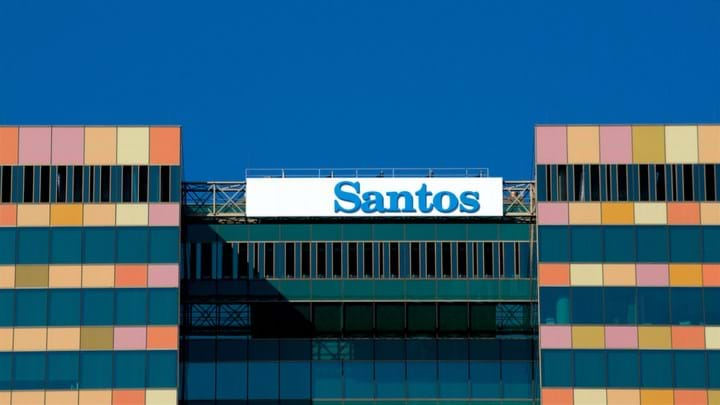Abandoned Santos gas wells off Western Australia coast leaking for a decade, environmental documents reveal

AN UNKOWN number of decommissioned gas wells at Santos’s Legendre gas field off the coast of Western Australia have been leaking from the seabed for at least 10 years, according to documents submitted to Nopsema, the country’s national petroleum regulator, by Santos in early 2022.
Located approximately 105 km north of Dampier, in Commonwealth waters on the North West Shelf, leaks were first noticed within the WA-20-L Legendre gas field site in 2013 during a two year post decommissioning survey using an underwater remotely operated vehicle (ROV).
The survey discovered small bubbles, 1–10 mm in diameter seeping from under anti-scour mats at three locations in the site: the Legendre Hub, Legendre South-1 and Legendre South-3, the details of which were reported to Nopsema in January 2014.
Further ROV surveys were conducted by Santos in 2019, 2021 and 2022 with the last confirming ongoing seepage from WA-20-L, a stretch of the seabed that the firm describes as “generally flat and featureless”.
While various attempts were made to measure the seepage rate prior to 2021, these were considered to be “qualitative and not useful for quantifying the seepage nor for making comparisons of seepage rates between years”, Santos said. But a survey conducted in 2021 by consulting firm RPS Australia West and commissioned by Santos, showed that gas was leaking at a total rate of 187 m3/y from 26 locations.
Samples collected during the 2021 survey from the Legendre Hub and Legendre South-1 surface locations also found that the gas has approximately 85% methane content, and that it is very similar to solution gases from oils collected from both the Legendre North and Legendre South pools of the Legendre field during the production life of the field, the report notes.
Santos has refused to take action to stem the leaks so far, stating it is "not feasible" to re-enter existing wells. This is because the production casing, surface casing, conductor, and wellhead have been cut and removed. “Any attempt to ‘drill through’ existing permanent cement plugs will be uncontrolled and is likely to result in inadvertent side-tracking into the surrounding shallow formation,” the Santos plan said.
Nopsema declined to comment on Santos’ environmental plan as it was under assessment, but was straightforward about its policy. “Nopsema would never accept that gas wells leak indefinitely,” a spokesman said.
Santos has concluded that the gas bubble seepage is not a risk to human safety, given the small gas volumes and low rates observed, and considers the risk to the marine environment and impacts to fish, including commercial species, “very low to negligible”.
Jeff Waters, an offshore fossil gas campaigner at Friends of the Earth, disagreed with Santos’s assessment. “Certainly it’s toxic to the environment in the sense that it’s adding to the greenhouse gas emissions of Australia,” Waters told The Guardian.
Speaking to WA Today, Waters said he was also concerned about possible leaks from other wells off the Australian coast that had been “plugged and abandoned”: the industry term for permanently sealing a well and discarding it. : “That these wells have been leaking methane for a decade is an indictment on the company for being such a filthy polluter, and on governments for allowing this to happen,” Waters added.
First oil discovery on the North West Shelf
Legendre was found in 1965 by the Woodside-Burmah group and was the first oil discovery made on the North West Shelf. The field finally started production in 2001, and at its peak was pumping out around 45,000 bbl/d of oil.
However, the site’s long-term outlook was deemed uneconomical, and between 7 January and 14 April 2011, 20 production wells were plugged and abandoned by then-operator, Apache. A further eight exploration and appraisal wells were also plugged and abandoned between 1968 and 2010.
Santos took over management of Legendre in 2018 and continued with this programme and subsequent surveys.
The Guardian reports that Santos has engaged the Commonwealth Scientific and Industrial Research Organisation (CSIRO) to monitor leaks at the Legendre gas field, and was currently implementing a management plan that included a regular monitoring programme.
Recent Editions
Catch up on the latest news, views and jobs from The Chemical Engineer. Below are the four latest issues. View a wider selection of the archive from within the Magazine section of this site.




